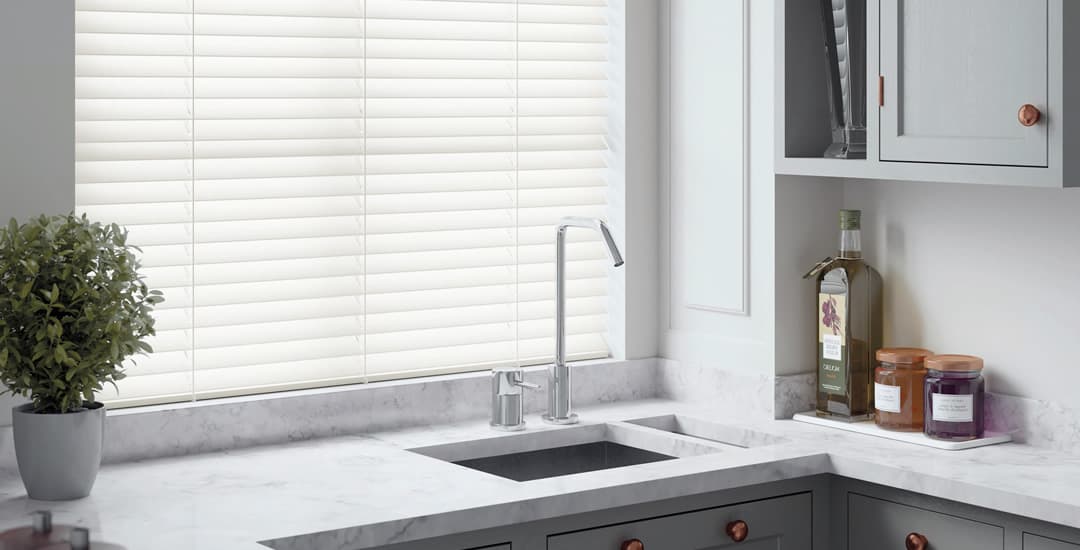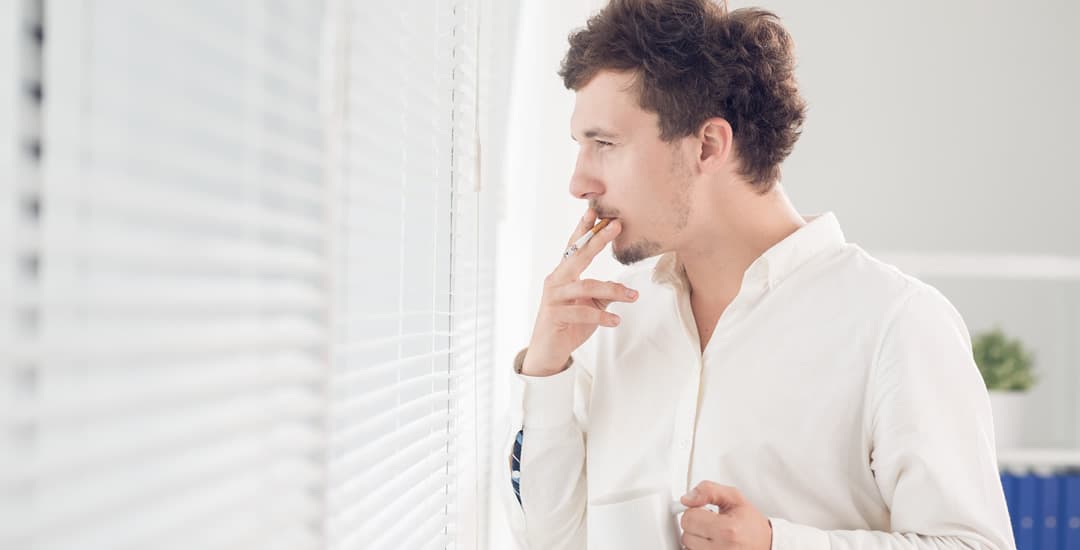
Knowing how to clean faux wood blinds that have yellowed depends on knowing what caused them to yellow in the first place; and if they smell like the lovechild of a 1980s pub carpet and a Rothmans convention, you can probably point squarely at nicotine staining and not go far wrong!
However, a number of other things including UV exposure can cause faux wood blinds to yellow too (no smoking required) and that’s a rather different kettle of fish.
This post will tell you how to clean faux wood blinds that have yellowed depending on what has caused this to happen, and also explain if and when you might not be able to salvage a yellowed faux wood blind at all.
Wait, faux wood blinds turn yellow?
Not necessarily! If you buy faux wood blinds it is certainly not an inevitability that they will yellow; yellowing is not a known and unavoidable downside of choosing faux wood blinds.
Whether or not your blinds are going to yellow over time depends on a combination of both the blind itself (in terms of its age and quality) and the main causes of yellowing in faux wood blinds, and if yours is exposed to any of them.
The next section should provide a fairly definitive guide as to what might cause a faux wood blind to go yellow in the future, or why this has already happened if yours are beginning to reflect a slightly jaundiced hue right now.
What causes faux wood blinds to yellow?

First of all, it is only white and other light-coloured faux wood blinds that are ever at risk of yellowing; darker colours don’t yellow, but can potentially fade and discolour in other ways, usually for the same reasons that cause yellowing in light-coloured faux wood blinds, but to different effect.
In terms of the catalyst for yellowing in faux wood blinds, there are three main culprits; these are:
- Exposure to UV/ bright sun over the period of several years *(and yellowing is still not inevitable in this situation, please see footnote).
- Nicotine staining due to exposure to tobacco smoke.
- General build-up of dirt/grime, often (but not exclusively) in kitchens, as cooking fats and oils with their generally yellowish hue then attract dust and other dirt to stick to them, creating a generally unpleasant-coloured and often tacky or furry finish!
*Circling back to my point on UV/sun exposure causing yellowing in faux wood blinds, this certainly used to be a common trait of older faux wood blinds a decade or two ago, once they’d been exposed to the sun day in and day out over the course of a few years.
However, good quality modern faux wood blinds are treated with a specialist coating to prevent this; which means that yellowing caused by UV exposure is only likely to occur on lower-end readymade modern faux wood blinds, and potentially very elderly faux wood blinds of a good quality but that pre-date the use of UV-protective coatings.
Can you clean faux wood blinds that have yellowed?
This depends on whether the blind has yellowed due to something building up on the surface of it (like nicotine or general grime) or if the issue is integral to the blind’s material itself, as is the case for faux wood blinds that have yellowed in the sun.
How to clean faux wood blinds that have yellowed for those that can be restored in the first place depends to an extent to what’s caused the yellowing (ie., nicotine or grime), but is fairly simple to achieve either way, particularly if you keep on top of things when it comes to blinds that are exposed to the source of the issue all the time (like rooms that somebody smokes in, or kitchens where a lot of fats or oils are used).
You’ll only be able to tackle yellowing caused by a topical build-up, not discolouration caused by exposure to the sun.
Also, if your blind has been exposed to nicotine staining that’s heavy enough and been ignored for long enough that it has actually started to impregnate the slats of the blind itself, you may not be able to restore it fully to its original colour. That said, you should still be able to achieve a marked improvement from your starting position.
For yellowing caused by surface grime alone, this will usually clean off without too much hassle, and leave your blinds looking as good as new.
How to clean faux wood blinds that have yellowed
How to clean faux wood blinds that have yellowed is best approached in terms of a “less is more” approach.
This means experimenting with a milder/less harsh technique in the first instance, and only escalating if this proves ineffective and you’re getting closer to the point at which you might as well have a go with something that might damage the finish of the blind because if you cannot fix the discolouration you’ll be binning it anyway.
In the order that I suggest you try things then, here’s how to clean faux wood blinds that have yellowed (other than by means of sun exposure, which cannot be fixed):
- First of all, try using a damp cloth soaked in lukewarm water and a mild detergent solution (like washing up liquid), to wipe off the slats.
- If this doesn’t work and you need something a little more heavy-duty to cut through grease or nicotine staining, there are a few solutions that you may want to make up and try (not all at once)! Being baking soda, lemon juice, and white vinegar respectively.
- You may also want to try a household cleaning spray that contains bleach.
- Finally, if you’re in last resort territory and your blinds are (or rather, once were) white and not any other colour, you might be able to bring back their colour by adding two to three small cups of bleach to a bath half-full of cold water, and soaking the blind’s slats in this for up to ten minutes before washing them and rinsing them off.
Finally, a couple of cautions on how to clean faux wood blinds that have yellowed without ruining them:
If your blind has coloured decorative ladder tapes, lemon juice, vinegar, and of course, bleach in any shape or form will potentially discolour these, and so you will need to limit yourself to cleaning the ladder tapes as best you can with just water and a mild detergent, and keeping anything more heavy-duty than this well away from the tapes themselves.
Also, whilst not hugely likely to happen, lemon juice and/or vinegar may affect the paint or finish of your blind as they’re acidic, so start with the baking soda and only move on if needed, starting by experimenting on a small, unobtrusive part of the blind first to make sure it doesn’t cause any damage. The same holds true for bleach solutions as well.
Any questions?
Tackling yellowing on faux wood blinds is one of the tricker potential issues you may face, and one that in some cases may not be fully effective. If you’ve got another idea you’re considering trying that I haven’t mentioned and want some feedback on whether or not it’s a goer, let me know.
If I’m not confident to advise immediately, there’s also a reasonable chance I’ll try it out on your behalf and let you know, just for the purposes of advancing the science of it (and avoiding doing any real work for a bit too) on one of the inevitable numerous faux wood blind offcuts we have cluttering up the recycle bins on the shop floor!




